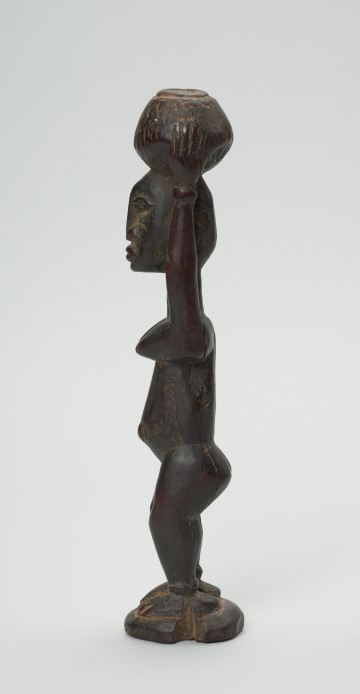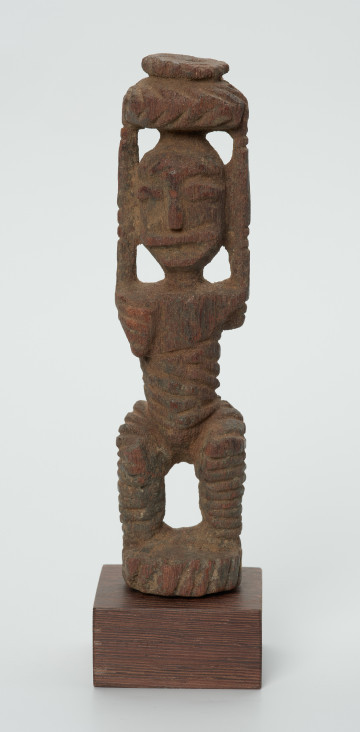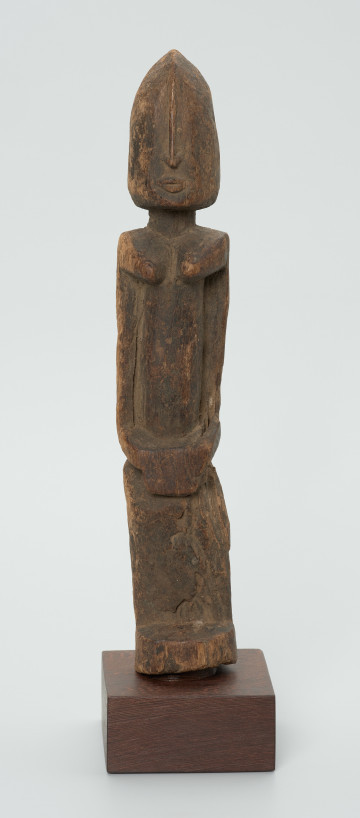
Figure - woman
między 1951 — 2000
National Museum in Szczecin
Part of the collection: Collection of Dogonian art
The figurine depicts a woman with a bulging belly, suggesting pregnancy. A pregnant woman is referred to in the Dogo-so language as ya bere kine (a woman with a full belly). If a Dogon woman dies in this state or during childbirth, she is called yapilu, i.e. white woman. This term refers to the white skirt with which her body is covered. The corpse of a woman who has died in any other circumstances is covered with a dark blue skirt, dyed with indigo. The term yapilu is also used to describe souls wandering in the bush, illnesses transmitted by the dead to the living, and practices aimed at protecting against them. A pregnant woman is living proof of her fertility, and her death is a serious blow to the Dogon because it marks the departure of two people. The inhabitants of the Bandiagara Escarpment believe that the disgruntled female guardian deity Yapirim is responsible for such an occurrence. The death of a pregnant woman is treated like a plague, which can spread to other women and to the farmlands. The Dogon therefore take measures to counteract the threat and propitiate Yapirim. The myth of the first yapilu is linked to the myth of the appearance of death in humans, which first met Dyungo Seru when he transformed into a snake. The witness to this event, apart from men dancing in masks - was a woman wearing a costume made of red fibres. After the death of the old man, the woman gave birth to two children, a son and a daughter. Both were affected by the life energy of the deceased - nyama. In the boy this manifested itself in his appearance. He was born having a body coloured red with spots like a snak’s ones. His younger sister, already as an adult woman due to the nyama action of the old man died during her first pregnancy and thus became the first yapilu.
Ewa Prądzyńska
Author / creator
Dimensions
cały obiekt: height: 16 cm, width: 4 cm
Object type
figure
Creation time / dating
Creation / finding place
Identification number
Location / status

między 1951 — 2000
National Museum in Szczecin

między 1951 — 2000
National Museum in Szczecin

między 1951 — 2000
National Museum in Szczecin
DISCOVER this TOPIC
Museum of King Jan III's Palace at Wilanów
DISCOVER this PATH
Educational path